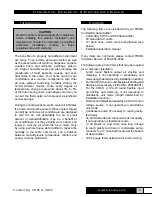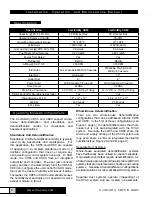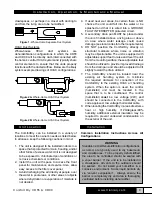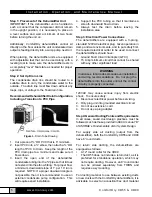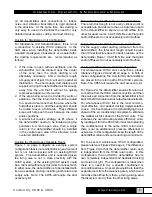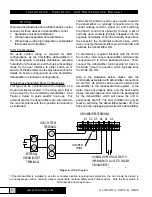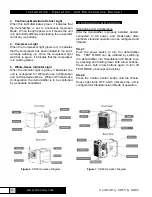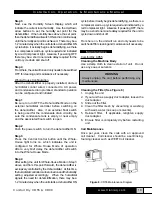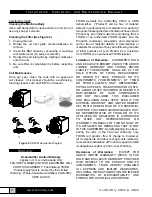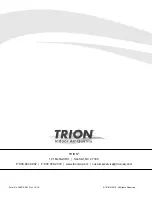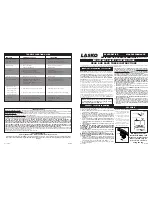
ComfortDry CD55 & CD90
I n s t a l l a t i o n , O p e r a t i o n , a n d M a i n t e n a n c e M a n u a l
www.trioniaq.com
3
Specifications
Specification
ComfortDry CD55
ComfortDry CD90
Capacity (@ 80°F, 60% RH)
57 Pints per Day
90 Pints per Day
Operating Relative Humidity
35-95%
35-95%
Operating Temperature Range
33°-105°F
33°-105°F
Volts/Hertz
120VAC/60 Hz
120VAC/60 Hz
Full Load Current (@ 80°F, 60% RH)
3.6 Amps
5.5 Amps
Coefficient of Performance
2.53 L/kWh
2.80 L/kWh
Energy Star Rated
Yes
Yes
Refrigerant
R410A
R410A
Airflow @ 0.00” S.P.
250 CFM
370 CFM
Inlet Filter
Yes, Washable MERV 8 Cassette
Washable Pre-Filter and
MERV 8 Cassette
Inlet Duct
Optional 8”
12”
Outlet Duct
6”
6”
Power Cord
20-ft Standard 3-Prong AC
20-ft Standard 3-Prong AC
Sound Level
52 dBa
58 dBa
Drain Pipe Connection
12-¾” OD, ½” ID Vinyl Tubing
12-¾” OD, ½” ID Vinyl Tubing
Digital Control for Standalone Operation
Yes
Yes
Dimensions L x W x H
18” x 12” x 12”
23.4” x 13.7” x 17”
Weight
40 Pounds
65 Pounds
ETL Listed
Yes
Yes
Operating Modes/Configurations
The ComfortDry CD55 and CD90 support whole-
house dehumidification and standalone unit
dehumidification modes for crawlspace and
basement applications.
Standalone Unit Dehumidification
Standalone Unit Dehumidification (SUD) is typically
used to dry basements and crawlspaces. For
this application, the CD55 and CD90 are capable
of operating in a complete standalone mode in a
ductless configuration that does not require any
extra ducting or control system hook-ups. In SUD
mode, the CD55 and CD90 have an integrated
humidistat and controller. The user just connects
power, plumbs in the water drain, turns the CD55 or
CD90 on, configures the unit control for SUD mode,
then sets the desired humidity and leaves it alone.
Thereafter, the CD55 or CD90 automatically senses
the humidity level and turns on as needed to remove
access moisture in the air.
Whole-House Dehumidification
There are two whole-house dehumidification
configurations that can be addressed with the CD55
and CD90. In the first of these configurations (see
Figure 1, page 4), the dehumidifier serves the whole
house but is not duct-integrated with the HVAC
system. Secondly, the CD55 and CD90 share the
return and supply ducting of the HVAC system and
may even share a common integrated thermostat/
humidistat (see Figure 2A and 2B, page 4).
Separate Duct Systems
Whole-house separated dehumidification systems
have traditionally been utilized to support separate,
more isolated rooms that require dehumidification. As
of late, there is a growing trend towards mini-split HVAC
systems that are implemented as heating and cooling
systems. Separated dehumidification configurations
are ideal solutions for mini-split based HVAC systems.
Separate duct systems operate independent of
the HVAC system and are located in basements,



